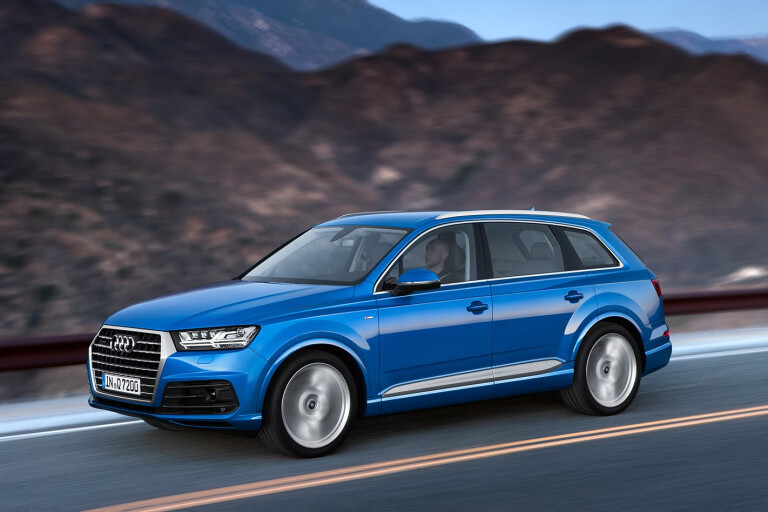
HIGH-TECH equipment, including a removable tablet computer and the soon-to-arrive Apple CarPlay and Android Auto connectivity systems, will help push the price of entry into the Audi Q7 closer to $100,000.
Arriving in Australia in the third quarter of 2015, the new seven-seat luxury SUV was unveiled at the Detroit motor show with a partial-electric e-Tron model as the flagship.
The all-new model, which has shed up to 325kg and adopted a cleaner, more cohesive look, will be a welcome sight for Audi dealers, who have soldiered on with the original generation Q7 that first arrived in 2006.
While Audi dominates in the small and medium luxury SUV segments – the Q3 and Q5 are comfortably top-sellers – the Q7 isn’t as successful against the BMW X5 and Mercedes-Benz ML with which it competes, partly because of its age.
However, accompanying the new model and its generous lashings of gear is a price increase above the current car’s $90,500 (plus on-road and dealer costs) start price.
Audi senior product communications executive Shaun Cleary said the mid-price for the new Q7 would be about $110,000.
The Q7 will initially be offered with a 3.0-litre V6 turbo-diesel (with 200kW and 600Nm) or a 3.0-litre supercharged V6 petrol (245kW/440Nm), each teamed to an eight-speed auto.
The plug-in hybrid diesel in the Q7 e-Tron puts out a hefty 275kW and 700Nm, enough to launch it to 100km/h in 6.0 seconds. It teams a 3.0-litre V6 turbo-diesel with a 94kW electric motor.
The Q7 e-Tron is claimed to travel up to 56 kilometres on electricity alone (it can then be plugged in and recharged) while accelerating to 60km/h on electricity in 6.1 seconds.
The Q7 will also be offered with a 2.0-litre turbo-petrol engine for the first time (185kW/370Nm), although it hasn’t yet been confirmed for Australia, with Audi saying it is “planned primarily for the Asian markets and the USA”.
Audi will also offer an “efficiency model” of the 3.0-litre diesel, which has been tuned more for fuel economy and drops outputs to 160kW and 500Nm.
The lighter weight, a torque-vectoring system and the new multilink independent suspension system are claimed to deliver significant improvements to agility and handling.
There is also optional adjustable air suspension and an optional four-wheel-steering system for better response and high-speed stability.
But it’s the technology and connectivity in the cabin that looks set to separate the Q7 from rivals.
Audi has developed an optional iPad-like tablet for the rear seats, allowing internet browsing and activation of audio and navigation functions by back-seat passengers.
The 10.1-inch tablet – or tablets, if you option one for each side – can even be removed and used in a wireless internet zone outside the car.
The significant cost of such a tablet was necessary to ensure it lived up to the rigours of life in a car, according to Audi board member for technical development, Ulrich Hackenberg.
“We didn’t find a tablet that fulfils the automotive demands of our customers; that’s the reason why we make it ourselves,” Hackenberg said.
“The tablets on the market are not able to be used under extreme conditions. For example, take a crash – the glass of a normal tablet is not made for a crash, so if you’re head is going against this touch surface, it breaks. With our tablet, it doesn’t break.
“Or if you leave the tablet in the car, then maybe you have very high temperatures … a normal tablet is not able to live long in such temperatures. Or if it’s very cold … a normal tablet is not able to run. Our tablet is able to do that.”
The Q7 also picks up Audi’s virtual cockpit, which replaces traditional instruments with an adaptive display with increased functionality.
There is also an 8.3-inch central screen that works with a touchscreen pad to operate major vehicle and infotainment functions.

COMMENTS